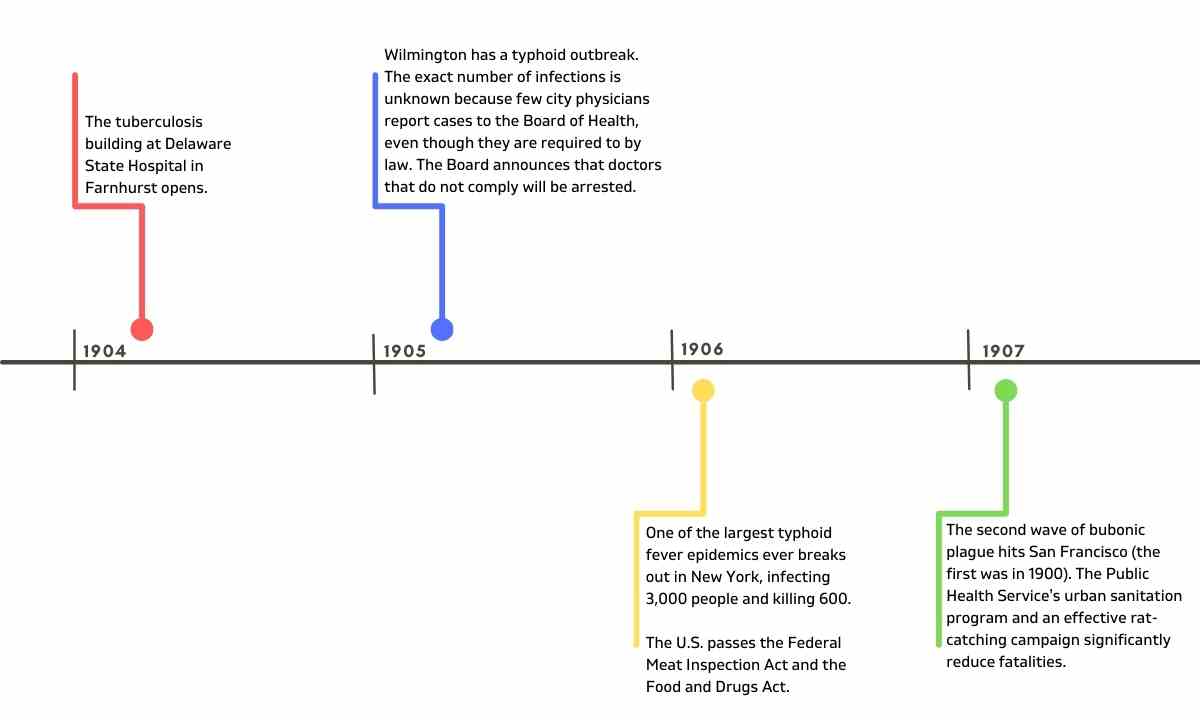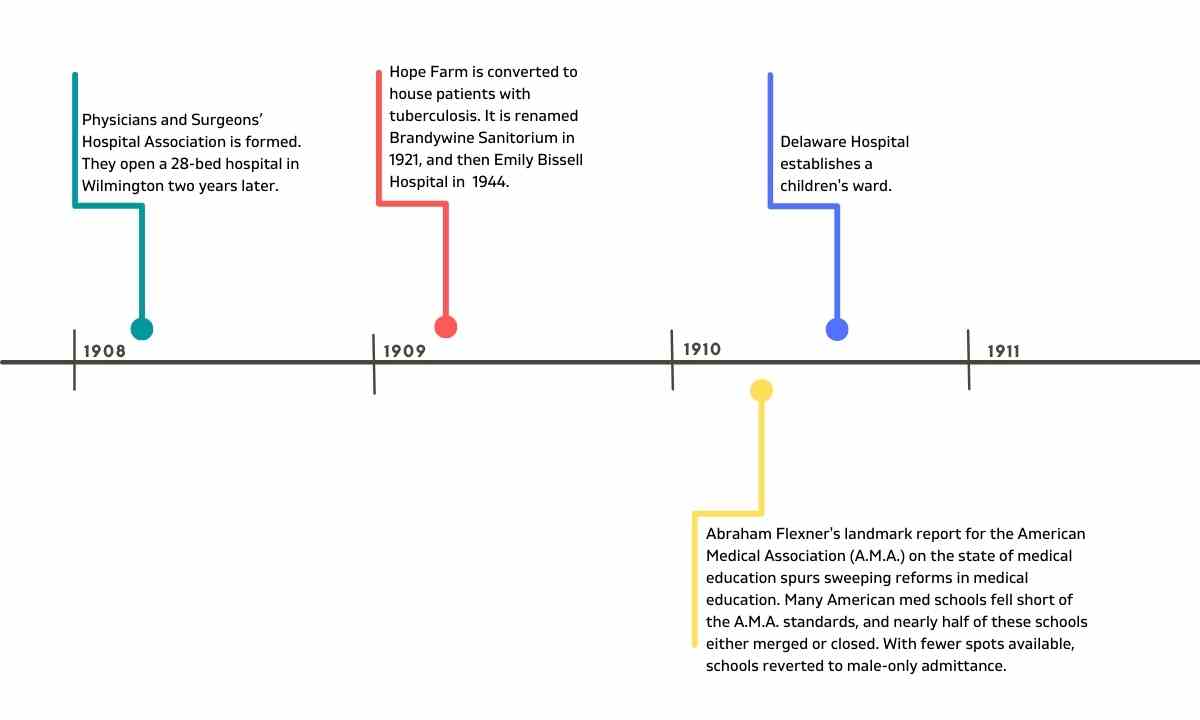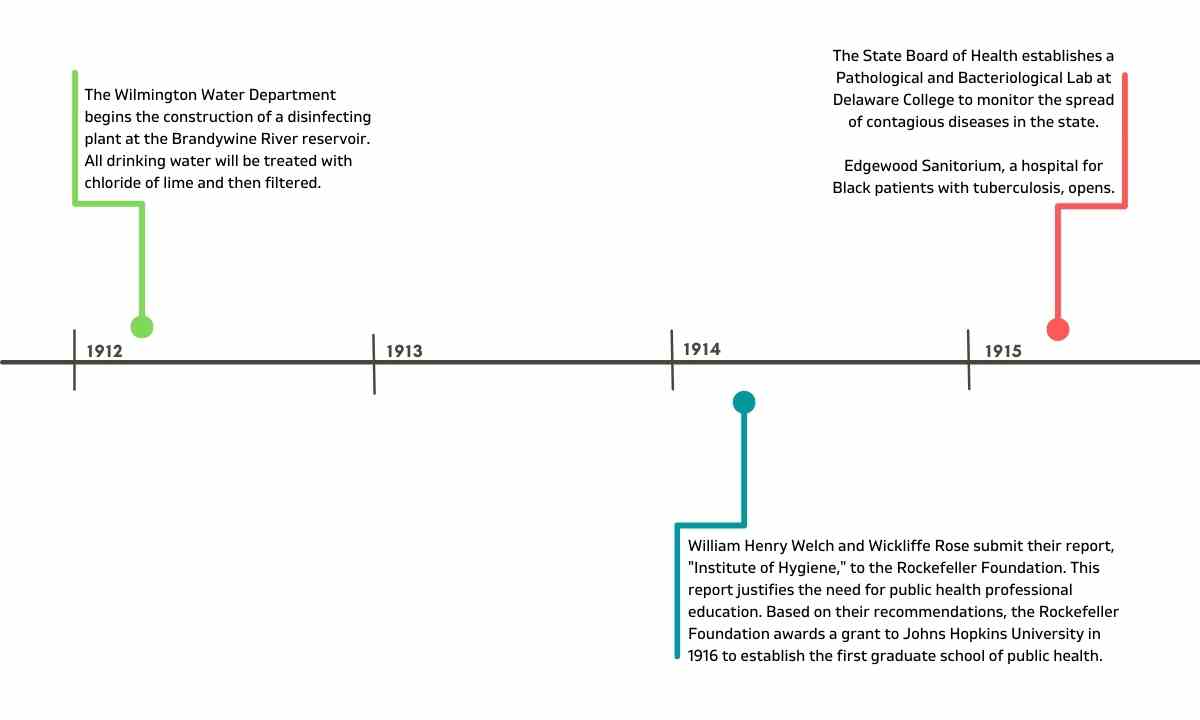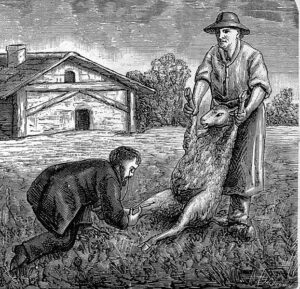“You have to know the past to understand the present.”
Carl Sagan
________________________________________________________________________________________________________
Medicine and Public Health in Delaware
At first glance, medicine in the twentieth and twenty-first centuries appears to be a clear-cut progression of successes in the fight against death and disease. A deeper examination reveals that while there have been many brilliant triumphs in the past 120 years, there were many setbacks, false starts, and failures along the way. After adding social, political, and economic factors, the history of medicine and public health becomes less a linear forward march and more of a complicated dance of competing forces. The timeline below marks some significant events since 1900 in Delaware (the top of the timeline) and the world (bottom).
The Weaker Sex
by Sharon Folkenroth Hess, M.A., Collections Manager and Archivist
On August 13, 1895, 27-year-old Sarah C. Crumlish was admitted to the Delaware State (psychiatric) Hospital at Farnhurst. Her husband, John, had noticed the “first symptoms of insanity” two weeks earlier, though she “had been steadily failing both physically and mentally” since the birth of their last child five years ago. She had not eaten well and complained of unspecified “uterine trouble.” Two months into her stay, a pelvic exam revealed Sarah had tears to the os uteri and cervix and a prolapsed uterus...[READ MORE]
Letter to the Editor
by Sharon Folkenroth Hess, M.A., Collections Manager and Archivist
There is no denying that digitized newspapers are a precious tool for researchers. Centuries-old news once forgotten is now available at any time. Keyword searches make finding relevant information easy—all without needing to leave home. The Delaware Academy of Medicine Archives is joining this digital revolution to share our rich collections with the world. However, for those willing to brave the dust and the occasional desiccated bug carcass…[READ MORE]
Homeopathy: The Art of Making Nothing Out of Something
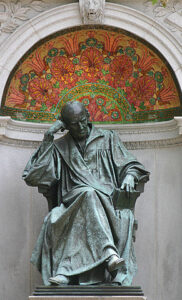
by Sharon Folkenroth Hess, M.A., Collections Manager and Archivist
Samuel Hahnemann (1755-1843) studied chemistry and metallurgy before receiving his medical degree at the University of Erlangen in Bavaria in 1779. Hahnemann took a position as a village doctor in Mansfeld, Saxony. It was not long until he started to question the efficacy of modern medicine...[READ MORE]
“We’ve Come a Long Way, Baby!”
by Sharon Folkenroth-Hess, M.A., Collections Manager and Archivist
While the need to feed a newborn is universal and timeless, the methods are not…[READ MORE]
“Of the Importance of General Vaccination and the Groundlessness of the Prejudices Against It”
 by Sharon Folkenroth Hess, M.A., Collections Manager and Archivist
by Sharon Folkenroth Hess, M.A., Collections Manager and Archivist
The 1870s and 1880s smallpox epidemics in the United States can be attributed to the successful mass vaccination efforts in the first part of the century. As cases became rare toward the mid-century, vaccine use decreased. Out of sight, out of mind. With the population susceptible to the ravages of the disease…[READ MORE]
From the Collections: Optical Microscopes
Anthrax in Delaware: A Deadly Legacy
by Sharon Folkenroth Hess, M.A., Collections Manager and Archivist
The Delaware Academy of Medicine Archives contains hundreds of rare and valuable texts, many of which were printed in Philadelphia and Wilmington. While the information and knowledge on these pages have saved countless lives, the books themselves have left a deadly legacy in Delaware…[READ MORE]
One for All and All in One?

by Sharon Folkenroth Hess, M.A., Collections Manager and Archivist
Just inside the Delaware Academy of Medicine entrance sits one of the largest objects in our collection. Unlike many of the items on display, visitors can immediately identify their purpose. The wheelchair is synonymous…[READ MORE]
Ambroise Paré: Father of Modern Surgery

by Elizabeth Healy, M.P.H.
Many historians and health care professionals regard Ambroise Paré as the father of modern surgery.
He gained increasing popularity while serving as a barber-surgeon in Paris; his reputation became so well acclaimed that he...[READ MORE]
Bacteriology and Sanitation
by Kate Lenart, M.A.
In the Delaware Academy of Medicine collection, we have a book “Bacteriology and Sanitation,” copyright 1909. Science was able to assess the presence of malaria-infected mosquitos and prescribe a course of action…[READ MORE]
Dental Keys
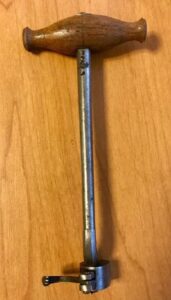
by Kate Lenart, M.A.
Like the wood-handled one pictured here, dental keys were a popular tool for extractions during the 18th and 19th centuries. Dentists would insert these instruments, also known as “tooth keys,” into the mouths of their patients...[READ MORE]
The Children’s Doctor
 by Kate Lenart, M.A.
by Kate Lenart, M.A.
Dr. Margaret Irving Handy was the first native-born Delawarean woman to become a physician and the state’s first practicing pediatrician. While chief of pediatrics at the Delaware Hospital, Dr. Handy improved care for premature babies and helped establish the Mother’s Milk Bank…[READ MORE]
“Social” Diseases
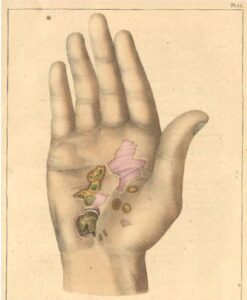 by Tim Gibbs, M.P.H., Executive Director
by Tim Gibbs, M.P.H., Executive Director
Although the terminology has changed, and the term “venereal disease” is used much less, the Delaware Academy of Medicine possesses several publications detailing historical treatment, diagnosis, and in-depth descriptions of venereal diseases…[READ MORE]
Yellow Fever
Kate Lenart, M.A.
American gynecologist Howard Atwood Kelly’s 1906 biography of Walter Reed emphasizes the Army physician’s role in tracing the source of yellow fever. Five years earlier, Reed and his colleagues had determined that a particular mosquito species was responsible for transmitting the disease…[READ MORE]



